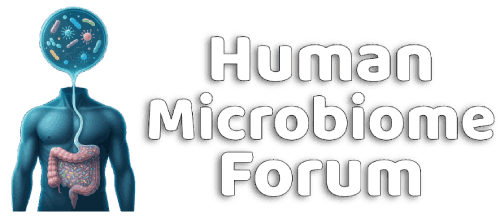Michael Harrop
Well-known member
- https://www.genengnews.com/topics/translational-medicine/gut-microbe-composition-during-infancy-may-protect-against-diabetes-in-later-life/
- https://www.colorado.edu/today/2025/03/19/gut-check-how-healthy-microbes-infancy-reduce-diabetes-risk
- Scientists Warn: Popular Infant Medicine Could Trigger Diabetes Later in Life
- https://www.science.org/doi/10.1126/science.adn0953
Exposure to antibiotics during a key developmental window in infancy can stunt the growth of insulin-producing cells in the pancreas and may boost risk of diabetes later in life
“a critical neonatal window in mice when microbiota disruption results in lifelong metabolic consequences stemming from reduced β cell development.”
the team concluded that their results “… identify fungi as critical early-life commensals that promote long-term metabolic health …”
Editor’s summary
In model animals, products from the gut microbiota have been identified that influence host cell function. For example, a bacterial protein has been found that promotes beta cell proliferation in the islets of the pancreas of zebrafish. Hill et al. found that neonatal mice must be exposed to a microbiota during a particular developmental window to be able to develop functional pancreatic beta cells and islets. The fungal species Candida dubliniensis mediates this effect through islet macrophages, possible through fungal cell wall components. If the developmental window is missed (e.g., in germ-free mice) or if the microbiota are disrupted during the developmental window, there is reduced beta cell development and compromised metabolic function reverberates throughout the life of the animal. —Caroline Ash
Structured Abstract
INTRODUCTION
Systemic glucose homeostasis depends on the hormone insulin, which is produced solely by pancreatic β cells. Without sufficient insulin, diabetes will ensue. β cell mass expands rapidly after birth, to accommodate the metabolic demands of growing infants. By studying postnatal β cell development, we may uncover novel mechanisms to either bolster this process in individuals who are genetically susceptible to diabetes or stimulate the endogenous replacement of these important cells after their loss.
Coincident with postnatal β cell expansion, the composition of the gut microbiota diversifies in distinct phases, with each new phase dominated by distinct taxa. Acquiring a sufficiently diverse microbiota appears to protect against childhood diabetes; however, the mechanisms involved are not known, and we cannot yet attribute specific mechanisms of disease susceptibility or protection to specific microbes.
RATIONALE
We have previously identified resident microbes that stimulate larval β cell proliferation in zebrafish, but mammals have more restricted β cell proliferation and distinct microbial communities. Specifically, mammalian microbiotas undergo distinct developmental diversification steps, whereby different microbial taxa dominate at different times. Microbiota diversification coincides with a fleeting period of postnatal β cell proliferation, which establishes a sufficient insulin-producing cell population. Therefore, we sought to test the hypothesis that mouse postnatal β cell development is stimulated by specific microbes during defined windows of microbial colonization.
RESULTS
By systematically ablating and restoring the microbiota during defined windows of pre- and postnatal life in mice, we identified a 10-day period before weaning when resident microbes are required to establish normal β cell mass. These observations were replicated using antibiotic and antifungal drugs, indicating that both bacteria and fungi promote host β cells. We also found that fecal samples from human infants, 7 to 12 months of age, robustly stimulated mouse β cell mass, whereas samples from other age groups did not, suggesting that humans also exhibit a window of colonization by β cell–promoting microbes. By comparing microbial communities that could and could not elicit β cell development, we identified specific bacterial and fungal taxa (Escherichia coli, Enterococcus gallinarum, and Candida dubliniensis) that were sufficient to promote murine postnatal β cell expansion. RNA sequencing of islets from germ-free and conventional pups across the critical window revealed a necessary role for microbes in stimulating macrophage infiltration of islets. Among our microbial candidates, we found that C. dubliniensis colonization promoted islet macrophages most significantly. Further, ablation of macrophages reversed the pro–β cell effects of C. dubliniensis, indicating that macrophages are required to mediate β cell promotion by C. dubliniensis in the developing islet. C. dubliniensis cell wall modifications were critical components of this islet-fungal signaling axis. We also tested the capacity of C. dubliniensis to mitigate diabetes in mouse models and found that not only could it reduce disease prevalence and severity, but it could also promote β cell restoration in adult animals after ablation.
CONCLUSION
Our study identifies a critical window in early life when transient enrichments of specific microbes are necessary to promote pancreatic β cell development. Bacteria and fungi provide important cues that are sufficient to promote this process. However, host sensing of these cues differs according to their microbial origins, highlighting the diverse host-microbe signaling mechanisms that have evolved to support insulin production. We describe a microbiota-mediated macrophage-dependent mechanism that supports recognition of distinct cell wall stimuli from commensal yeast, which may be used as a tool to prevent or reverse β cell loss.
- Format correct?
- Yes
Last edited:
